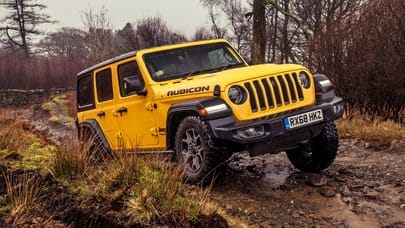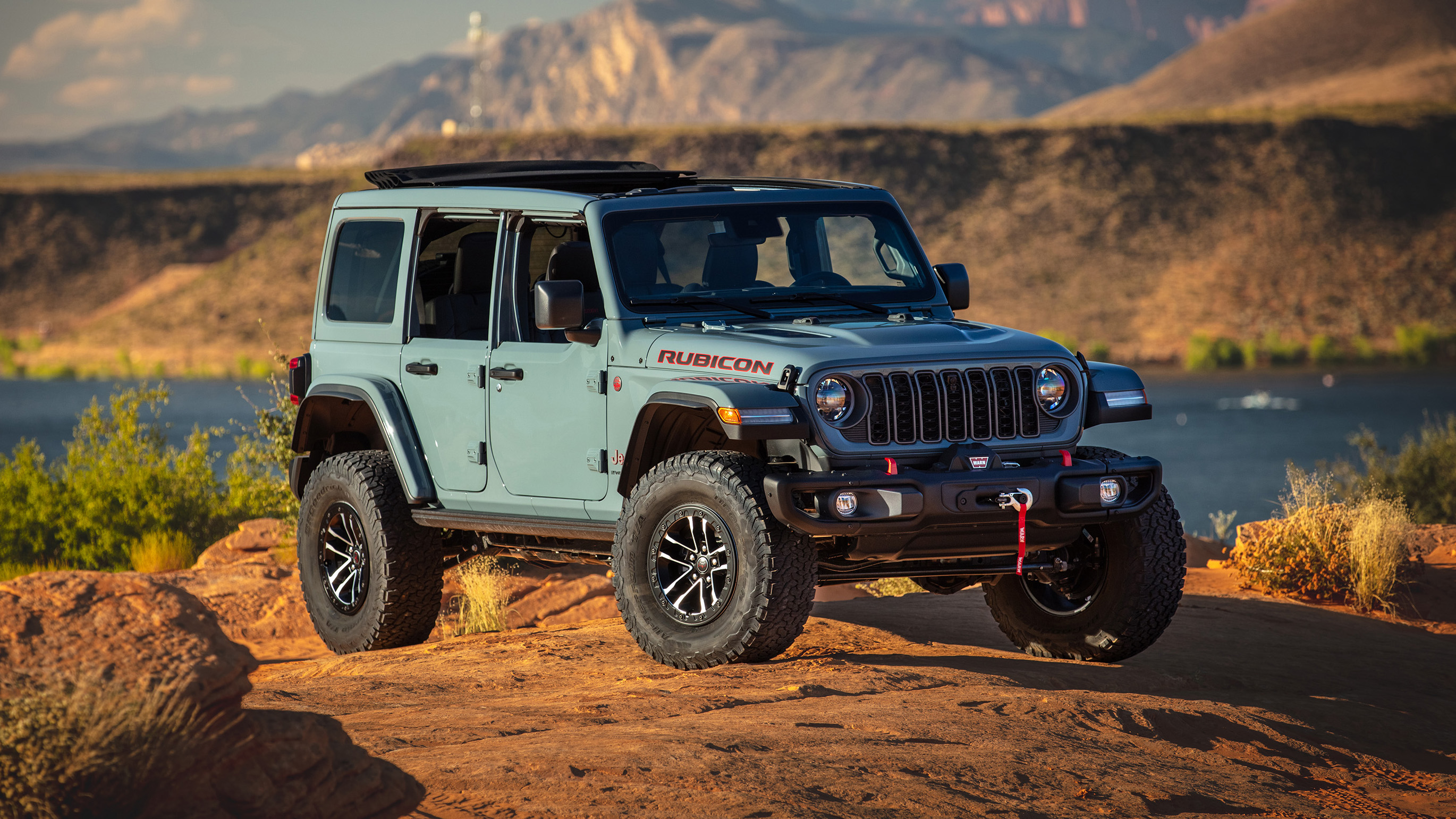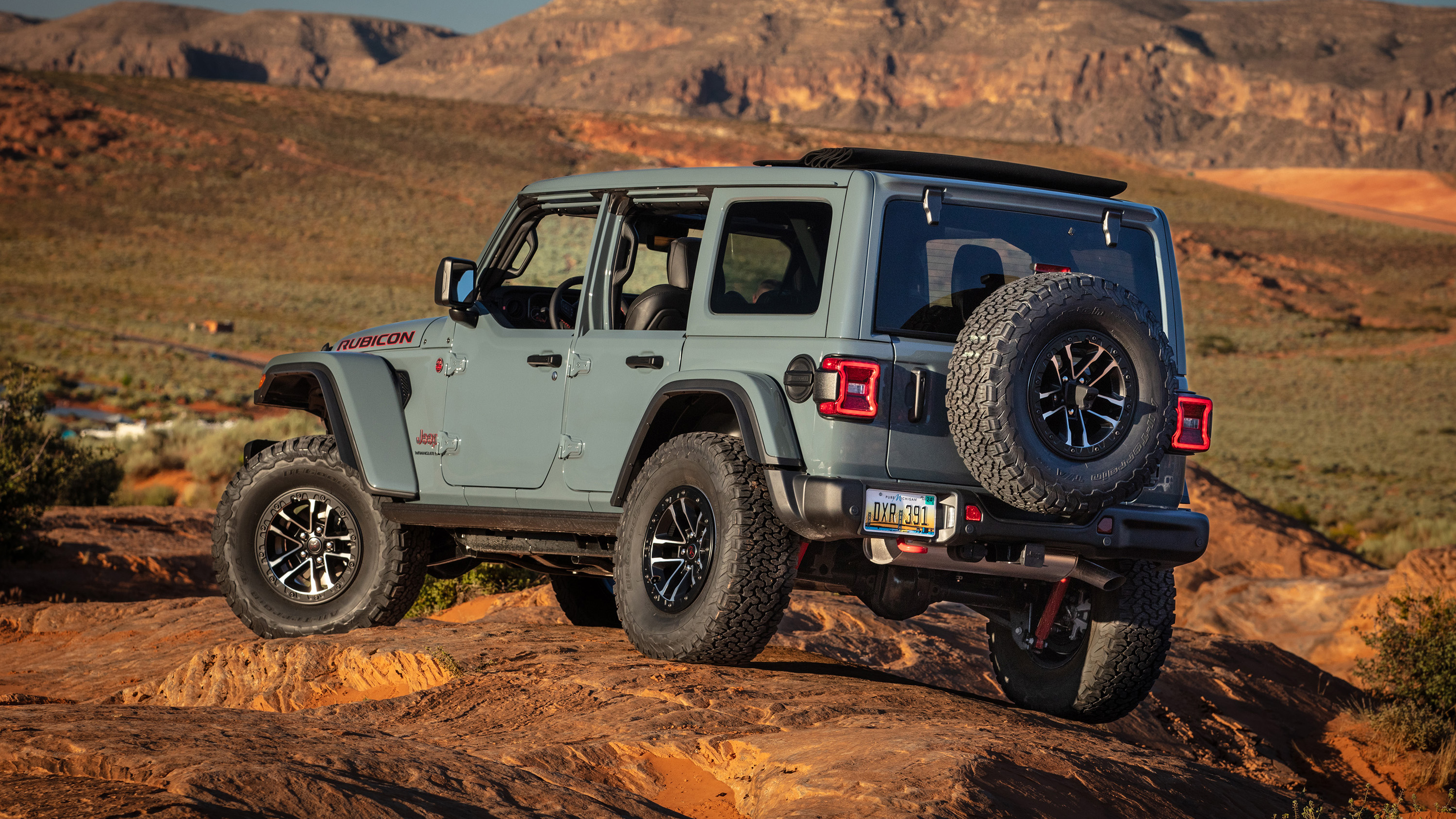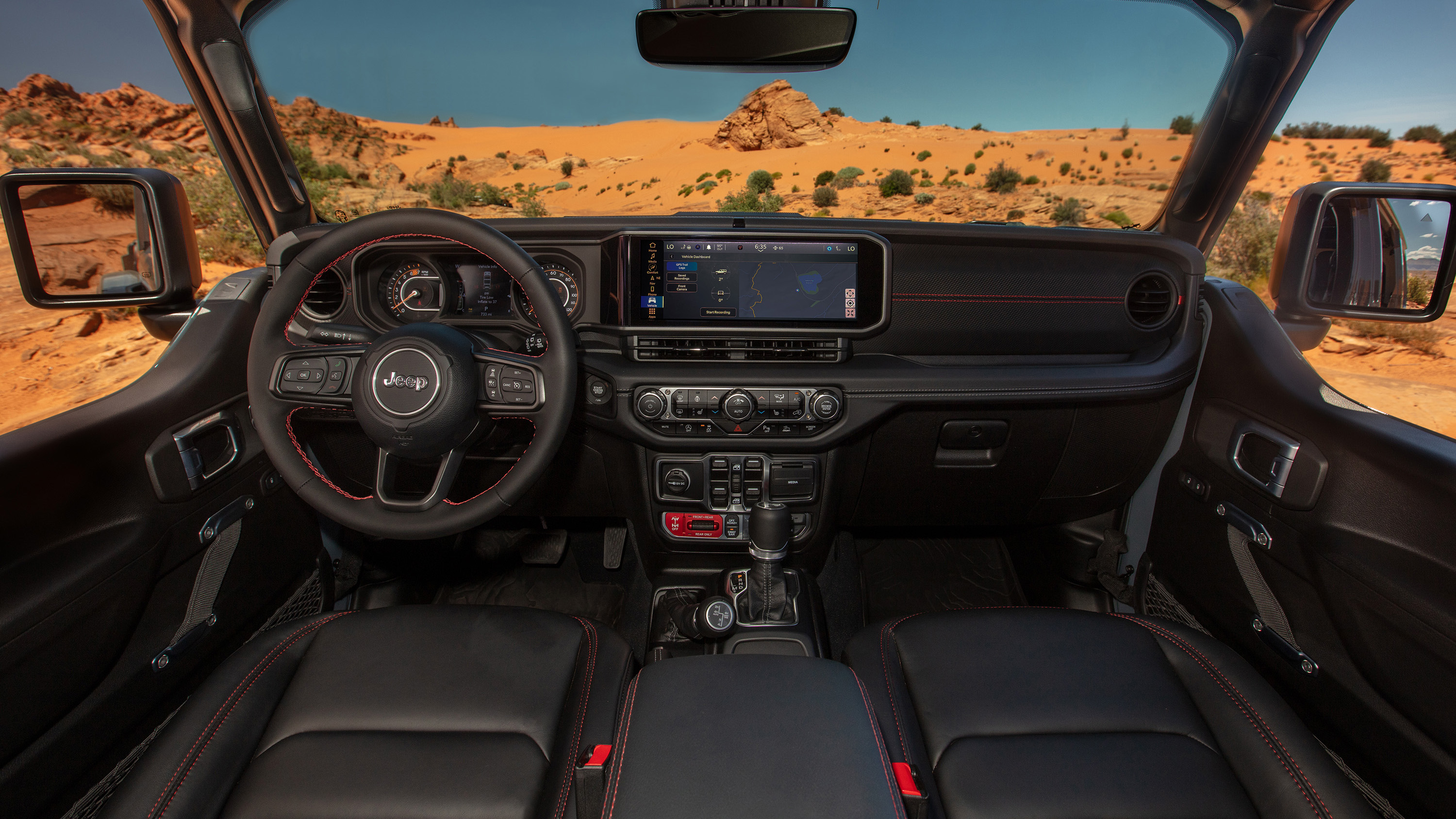
Jeep Wrangler (US) review
Driving
What is it like to drive?
The Wrangler makes no secrets about prioritising its rufty tuftiness over on-road refinement, but that does mean it makes some compromises on the harder stuff. The steering is rather vague, its boxy shape and raised suspension means there’s a fair amount of body roll through corners, and, in the soft-top Rubicon variant we were driving, there was fair amount of roar road and wind noise too.
But all that you kinda expect, y’know? And there are benefits to its boxy shape too, all-round visibility for one, while its softly sprung suspension and huge tyres make mincemeat of any ruts and bumps in the road, meaning for the most part it’s perfectly comfortable. Over several lengthy journeys we emerged with few complaints.
RUN ME THROUGH THE AVAILABLE POWERTRAINS AGAIN…
There’s four to choose from in total, opening with a 3.6-liter V6, tuned to focus on low-end torque (better for off-roading, in other words), which outputs 285hp and 260lb ft of torque and can be paired with a six-speed manual or eight-speed auto.
That’s followed by a 2.0-liter turbocharged four-cylinder which offers 270hp and 295lb ft of torque and is sent to the wheels via an eight-speed auto transmission. Needless to say, it’s the more eco and environmentally friendly option.
The plug-in hybrid gets the same 2.0-liter turbocharged four-cylinder, only paired with two electric motors for a peak output of 375hp and 470lb ft of torque, while up to 21 miles of all-electric range is available courtesy of the 17.3kWh battery pack.
Finally, the 6.4-liter V8, available exclusively with the Rubicon 392, ups the ante with 470hp and 470lb ft of torque, sent to the wheels via an eight-speed auto gearbox, for a 0-60mph time of just 4.5 seconds and a quarter mile time of just 13 seconds.
HOW DOES THE PLUG-IN HYBRID FARE IN THE REAL WORLD?
The dual motors provide 178hp and 220lb ft of torque alone, and at low speed it wafts about smoothly, while offering handy extra grunt under acceleration. In and around the city you can easily rely on electric power alone.
Proper buttons allow you to switch between full EV, hybrid and battery save driving modes, with Jeep claiming up to 370 miles from a single tank of fuel and full battery, including up to 21 miles of EV range. That’s around 49 miles to the gallon, versus 24 in the regular 2.0-liter 4cyl models without any electrical assistance.
Which is great, if you can keep the battery topped up. If you can’t you’re forced to rely on the 270hp and 295lb ft of the engine alone, and haul those batteries around, which given the 2.5-tonne weight, does feel a struggle at times.
PRESUMABLY IT’S ALRIGHT AT THE OFF-ROAD STUFF TOO…
Oh, it’s the real deal alright, as we discovered when we took a bone stock Wrangler Rubicon 4xe to the Cliffhanger trail, one of the most unforgiving tracks in the world, and escaped unscathed. And we even got the video to prove it, too.
Every model gets four-wheel drive, a two-speed transfer case, skid plates, minimum 32in tires, up to 12.9in of ground clearance, up to 13in of water wading depth… you get the gist. Put it this way – unless you’re really, really trying to get stuck in the mud, it’s likely you’ll run out of talent long before the Wrangler does.









